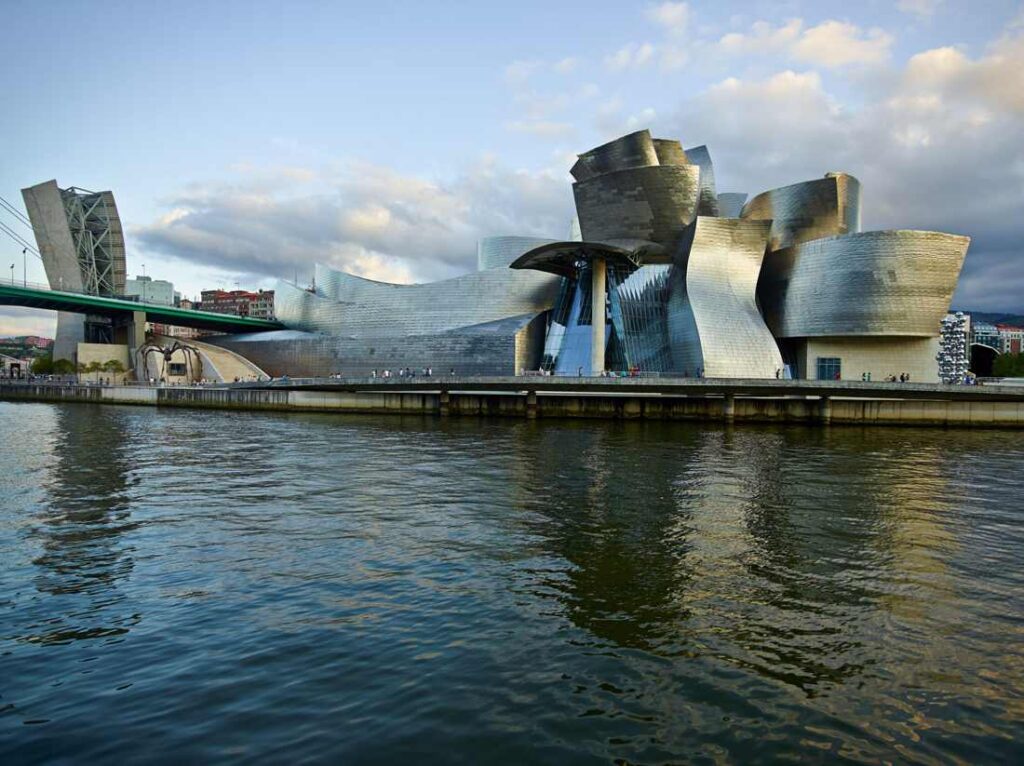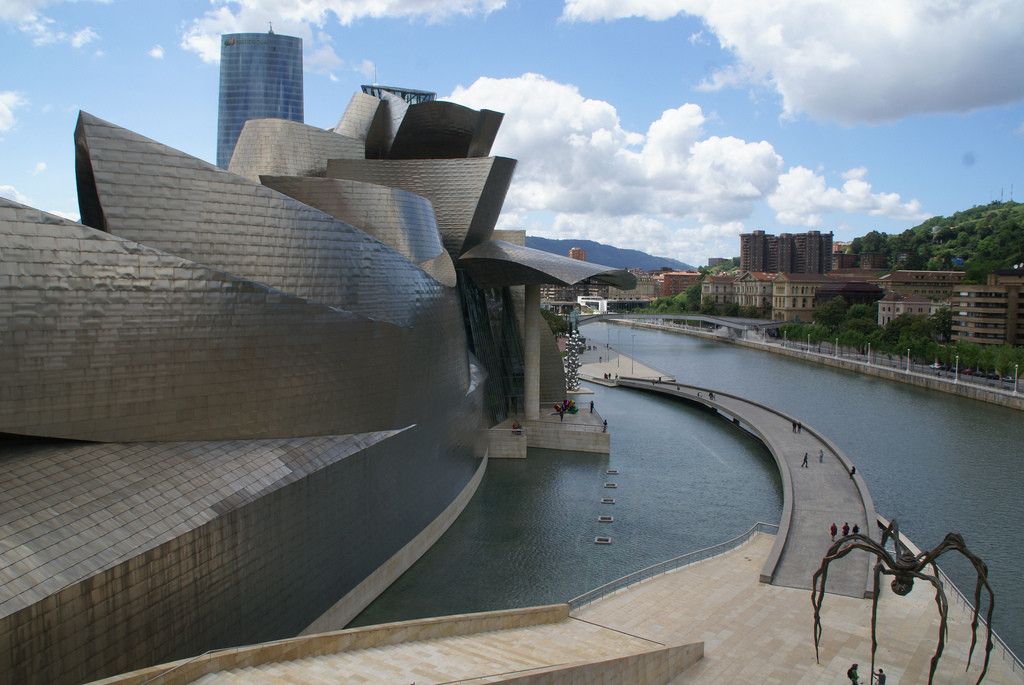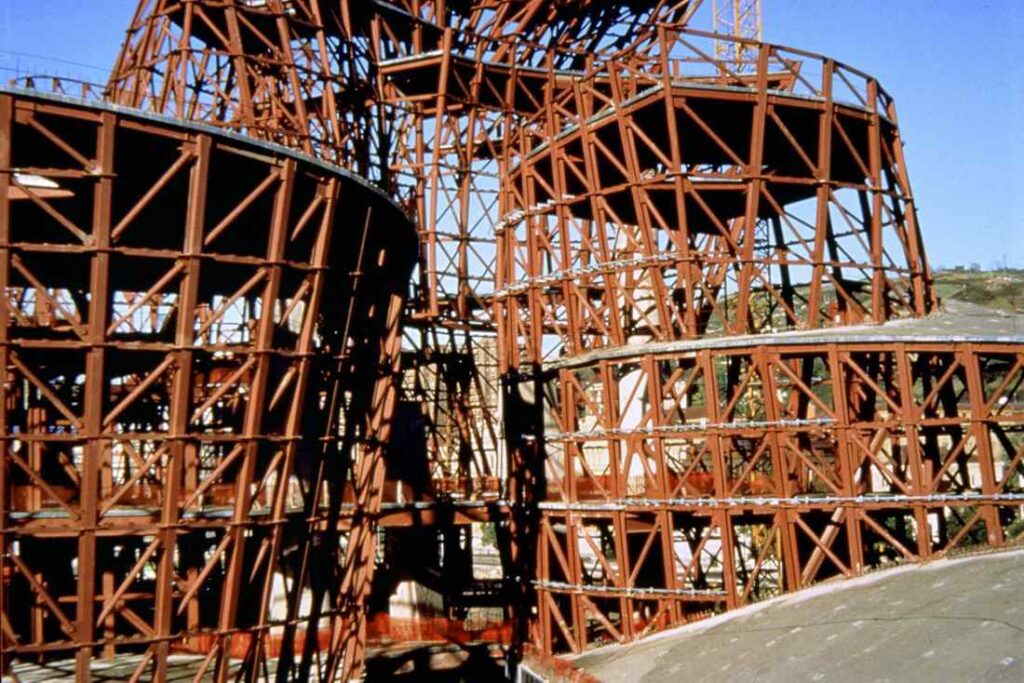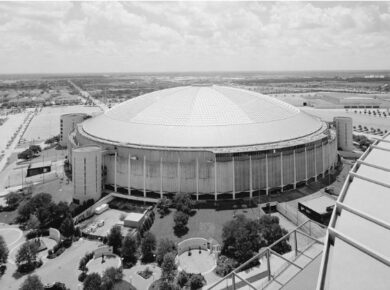The Guggenheim Museum in Bilbao was inaugurated on 18 October 1997.
Set on the edge of the Nervión River in Bilbao, Spain, the Guggenheim is a fusion of complex, swirling forms and captivating materiality that responds to an intricate program and an industrial urban context.

Photo: © Courtesy of Guggenheim Museum Bilbao
With over a hundred exhibitions and more than ten million visitors, Frank Gehry’s Guggenheim Museum Bilbao not only changed the way that architects and people think about museums, but also boosted Bilbao’s economy. In fact, the phenomenon of a city’s transformation following the construction of a significant piece of architecture is now referred to as the “Bilbao Effect.”

Photo: © Courtesy of Gehry Partners
Although the metallic form of the exterior looks almost floral from above, from the ground the building more closely resembles a boat, evoking the past industrial life of the port of Bilbao. Constructed of titanium, limestone, and glass, the seemingly random curves of the exterior are designed to catch the light and react to the sun and the weather.

Photo: © Courtesy of Guggenheim Museum Bilbao
The innovative use of structural steel in concert with extensive reliance on modern computer capabilities by engineers, architects, detailers, and fabricators played a vital role in realizing the project on time and within budget. The choice of structural steel as the primary frame material became a natural decision based on its low structural self-weight and the ability to control and verify the structure in a shop environment.

Photo: © Aitor Ortiz
Because of their mathematical intricacy, the twisting curves were designed using a 3-D design software called CATIA, which allows for complex designs and calculations that would not have been possible a few years earlier.
The largest gallery in the Museum is 30 meters wide and 130 meters long and houses a permanent installation called “The Matter of Time” by Richard Serra. The socio-economic impact of the museum has been astounding. During the first three years of operation, almost 4 million tourists visited the museum—generating about 500 million in profit.
About the Author:

Bruno Dursin – Managing Director at Believe in Steel. Bruno has more than 30 years of experience in promoting steel & steel solutions. His clients benefit from his extensive network within the building industry.



